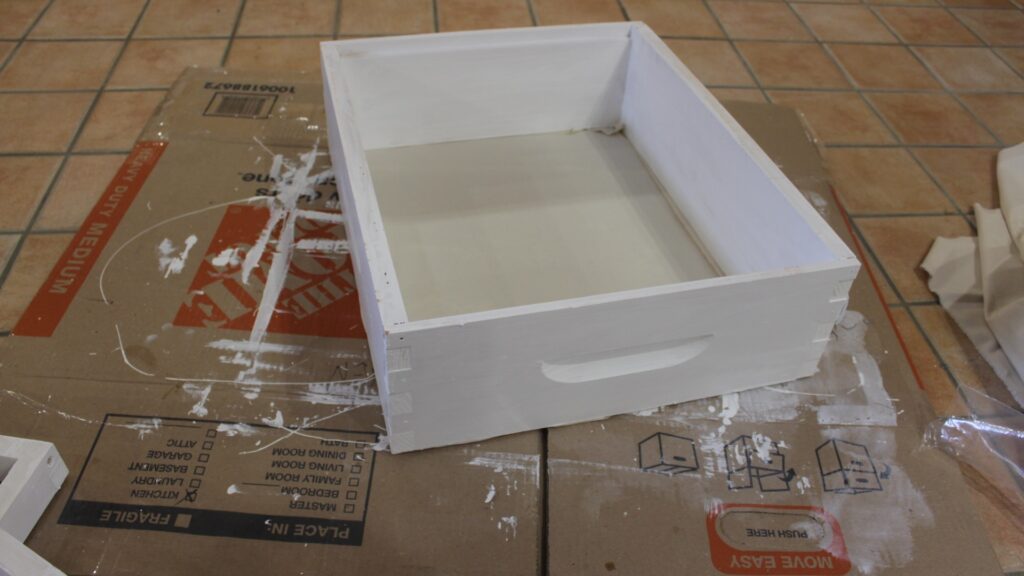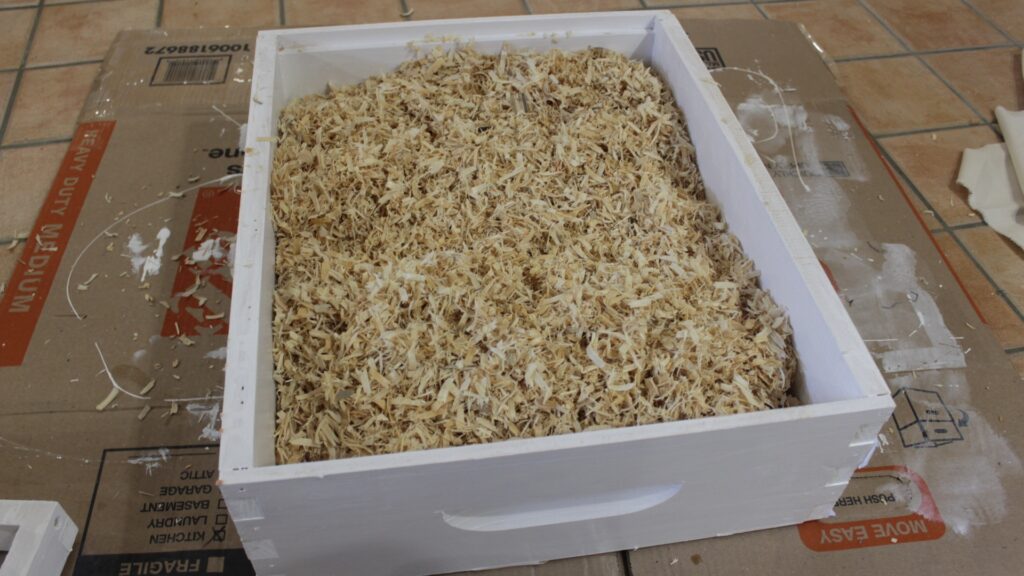Living in a colder climate than I did with my previous hive, I need to take some extra steps now to give them the best odds I can to survive the winter. To that end, trying out the addition of a quilt box to the hive!
Although a box full of adorable hand crafted individual bee sized quilts would be lovely, the reality is rather simple: a box of wood shavings over a permeable material. The purpose is not to keep the bees warm like the name might imply, but dry.



The bottom of the box has a sheet of cotton canvas stapled to it (and what a masterful job I did on that), on top of which a pile of wood shavings is dumped. During the colder months, the bees will cluster in a ball, with the energy provided by metabolizing their honey supply generating warmth. Inside the hive, that warm air will rise, and without anywhere to go, cool and condense on the inside of the top cover. This water can drip back down onto the bees, and while a cold bee does just fine, a cold wet bee is a dead bee.
Normally, painting the inside of a hive box is a waste of time and paint. The bees will coat the hive interior with a layer of propolis, a resin-like material they use to seal and protect their hive, so the paint isn’t going to be accomplishing much. But because the quilt box will not only be free of bees, but have high moisture levels, the paint serves to keep the wood protected from rotting due to water content.

The canvas will allow warm air to flow up, where it will condense and collect on the pine shavings rather than drip back down. A vent hole, screened to prevent not just the bees themselves but any other animals looking for winter shelter from making a home inside, will also allow the moisture a place to vent.

Installing it is very simple. Just toss it on top of the other boxes. I actually should have done this a bit earlier in the season, to make sure the bees have time to properly seal any small gaps, but I’m likely going to wrap a layer of insulation around the outside of the hive once it gets colder, which will help address that at least.

One last quick glance down into the frames, likely the last before next spring.

The only other thing to do is add a reducer to minimize cold air flow into hive entrance, but that’s just a matter of jamming a piece of wood into the entrance and can wait until the days start getting properly cold.